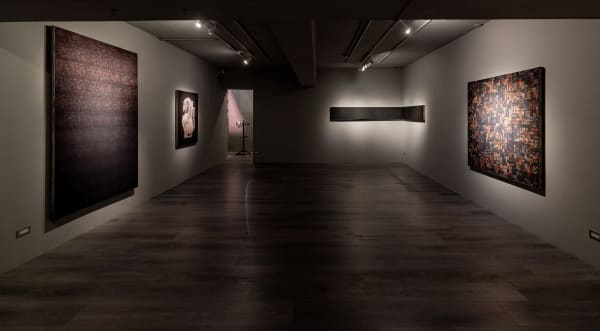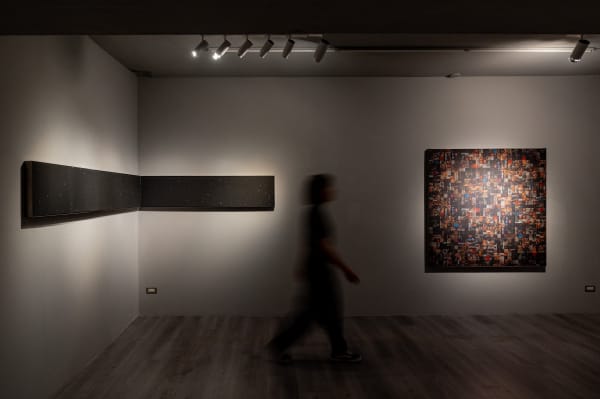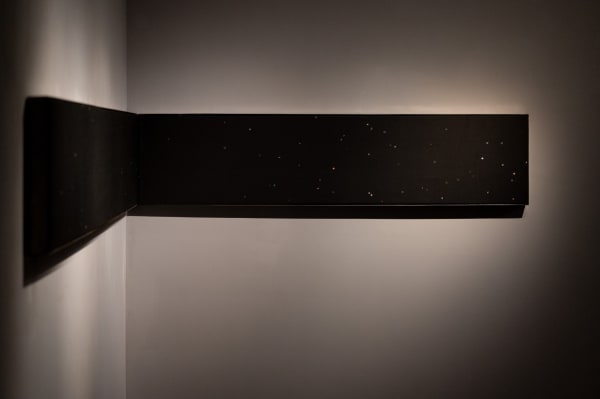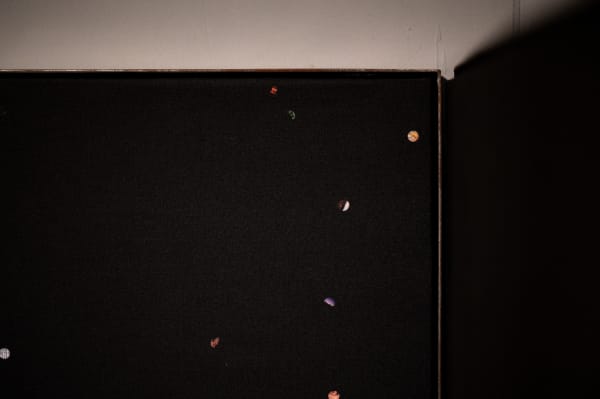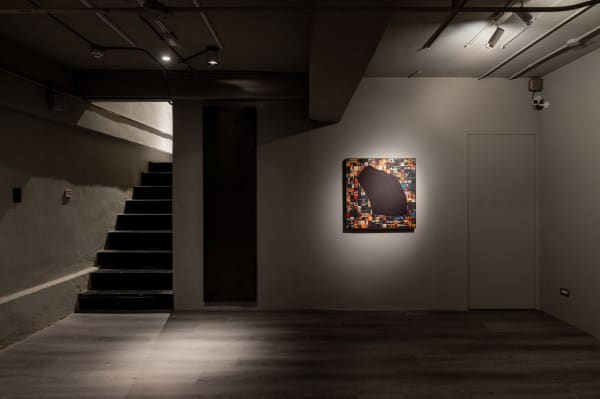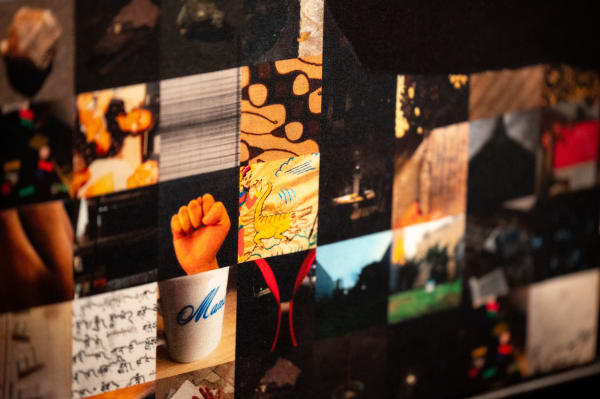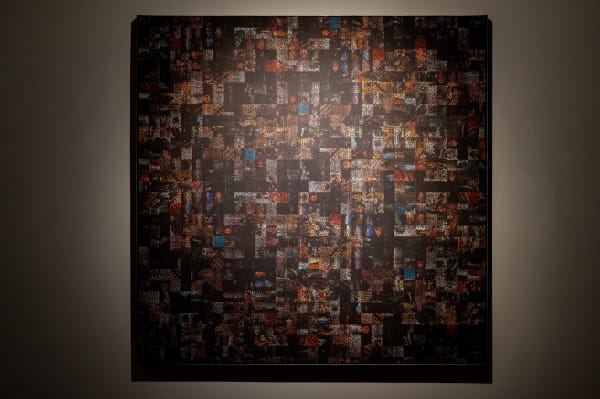亞歷山大.塞巴斯丁 : Titik Dari:Constellations of From
In ‘Titik Dari’ which means points of from, Sebastianus questions the locality of ‘belonging’ within the memories of our past and how we make sense of the varying dimensions it can take form. Alexander Sebastianus Hartanto ritualizes the act of recalling a memory through intertwining two generational methods of memory keeping; photography and batik, a Javanese wax-resist dye technique. These works, which the artist describes as ‘studies’, investigate the shape of ‘being’, its many layers, and its constitution. Pixelated image-particles, representative of memories and belongings, are imprinted on cloth and waxed over, before the cloth is then dipped into dye. This batik process is an apt metaphor for recalling, recovering, and unveiling, as the wax holds the initial image imprinted onto the fabric, resisting the dye that otherwise shrouds the rest of the textile in darkness. Sebastianus utilizes craft as a transformative method of contemplation that allows us to materialize and meditate on our unconscious.
In his search for points of from, Sebastianus references philosophers Deleuze and Guattari’s notion of the rhizome, a non-hierarchical sprawl of various roots, shoots, and possible trajectories, always open to interconnection and entanglement with others. These studies, meta-morphed the sediments of our memories that we’ve accumulated into the cosmological plane of a cloth. Enabling us to form a unitary body/rock composed of particles in millions, a material that we can mold and sculpt into monuments of our forms.

